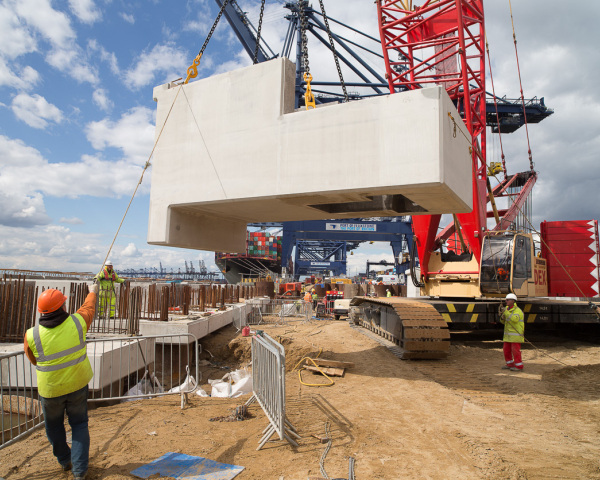
Southampton Berths 201/202
The Port of Southampton is the UK's number one export and vehicle handling port, handling exports worth £40 billion annually.
Purpose
To ensure the port could expand operations to meet future demand and be able to berth container ships that were getting much bigger, owner Associated British Ports wanted to upgrade and deepen Berths 201 and 202, which dated back to the 1960s.
What we did
We reconstructed the quay walls of Berths 201 using an anchored pile option to cater for the new berth depth. We overcame challenging ground conditions by using a jet grout column solution, to make sure the tubular piles reached their required toe depth. Piling works were restricted to the winter months, to avoid disturbing the Atlantic Salmon population.
We constructed the new combi-wall 3m in front of the existing berthing face. It is made up of 149 tubular piles, each 1.8m in diameter and 43m long, and 27m long infill sheet piles. We installed the piles using crawler cranes working from the existing deck.
The combi-wall is retained by a sheet piled anchor wall, which we installed with an ABI rig. We connected the two with 171 tie rods after dismantling the existing deck.
We developed a bespoke piling gate to install the huge tubular piles safely and accurately, which accommodated six tubular piles at one time. The frame allowed the crane and piling hammer to drive each pile in turn, and to move forward without the delay in having to place each pile individually.
We installed precast concrete units onto the new combi-wall to form the shell of the coping beam, which incorporates the front crane rail. To complete the work scope, we installed deck furniture such as fenders, kerbs, ladders, rails buffers and signage.
Project successes
We strengthened and deepened 550m of the quayside, so Berths 201 and 202 can now accommodate supersized container ships berthing at their loaded draughts. We successfully delivered these works on time, despite challenging ground conditions. We ensured the port could continue operating smoothly throughout. For example, maximising the reuse of existing quay materials as backfill saved 14,000 wagon movements to and from site.






